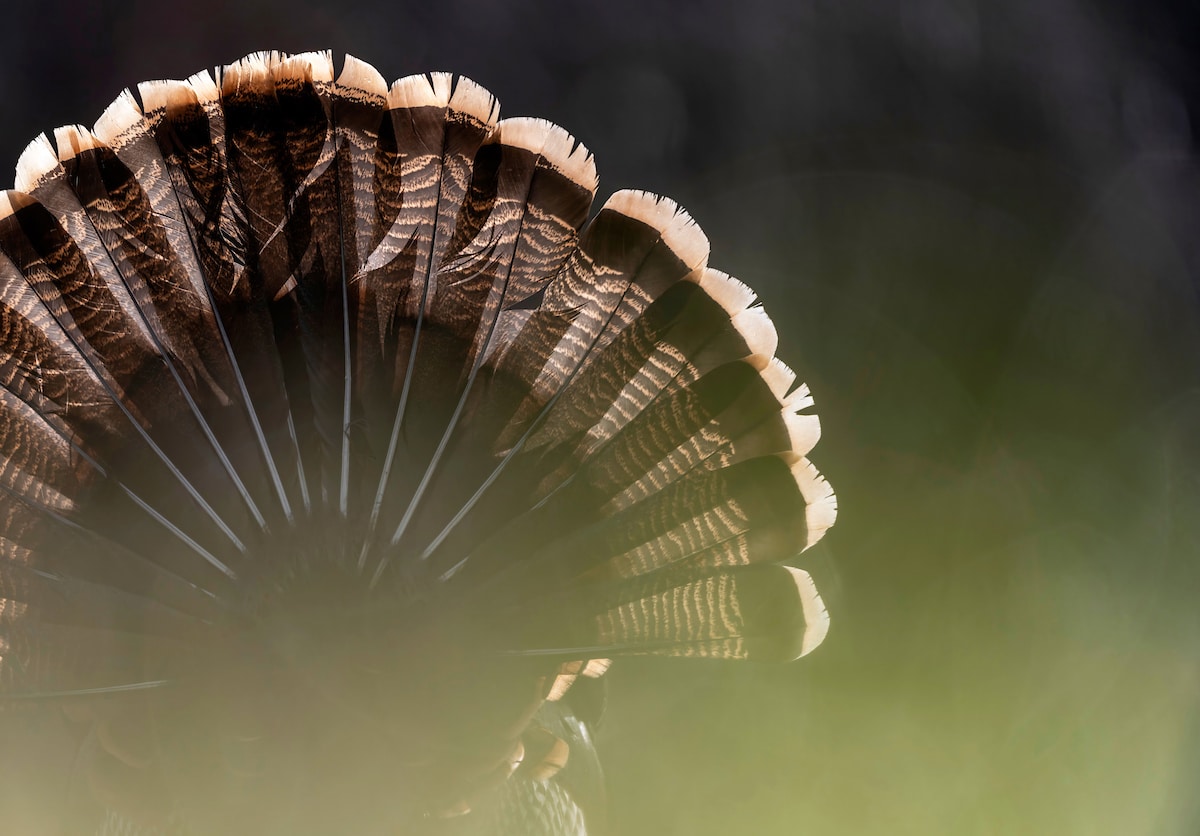For most hunters, a turkey is a turkey. The males gobble, and they have spurs and a beard. The hens are smaller, and they have less colorful heads compared with a gobbler. They all yelp, cluck, cutt and putt. That’s the gist of it, but did you know North America has five different subspecies of turkeys?
The National Wild Turkey Federation website explains that the two species of turkeys are the North American and the ocellated. The North American species has five subspecies, including the Eastern, Florida (Osceola), Rio Grande, Merriam’s and Gould’s. Each subspecies lives in a different geographic region in the U.S. The ocellated turkey is a separate species that inhabits a 50,000-square-mile area in Mexico, northern Belize and northern Guatamala.
Billy Yargus is a champion turkey caller who’s been fortunate enough to hunt all five subspecies. He started hunting turkeys when he was 13, and he began bowhunting them in 1982. His passion for turkey hunting led him to turkey calling competitions.
Yargus has won three NWTF Grand National titles, three world championship titles, three Missouri state championship titles, a U.S. Open title and other, smaller competitions.
“I didn’t have plans for any of that, but I enjoyed it and kept going,” he said. “I started having more opportunities to hunt different states. I wasn’t on a quest to do a World Slam (all North American subspecies and the ocellated turkey). I just got opportunities to go to different places and hunt different kinds of turkeys. It was an (awesome) experience. It’s very satisfying to fly someplace that’s a 24-hour drive away from home to kill a different kind of bird that acts and looks different.”
Now, in addition to his full-time day job, Yargus designs and makes turkey calls for Woodhaven Custom Calls. He’s grateful for his experiences as a turkey caller and hunter, so he shared his insights with Bowhunters United to help beginners recognize the different characteristics of the five North American subspecies.
With a few rapid-fire questions, we asked him to rank the species:
The answers are interesting and inspiring because three-quarters of the U.S. has the Eastern subspecies. Let’s dive into the subspecies’ physical differences, mannerisms and calling habits to help you prepare to chase each bird.

Note the white-tipped feathers of the Merriam’s turkey. Photo credit: John Hafner
A few physical characteristics define each subspecies. Although the turkeys look mostly the same, there are subtle differences, as explained on the NWTF wild turkey appearance webpage. For example, the Eastern and Osceola wild turkeys have brown tips on their tail feathers, whereas the Rio Grande has tan-tipped tail feathers, and Merriam’s and Gould’s have off-white or very light tipped tail feathers. Their wing feathers all have different ratios of white to black bands, too. The male birds of the Gould’s, Merriam’s and Eastern subspecies weigh between 18 and 30 pounds. The Osceola and Rio Grande male turkeys usually weigh about 20 pounds. Using a map of the subspecies’ home ranges will help you determine what bird you’re hunting.
Eastern and Osceola birds are a lot alike, Yargus said. They’ll both hang out in an area for hours, usually because their food is in a concentrated area and they don’t have to travel. Yargus classified Merriam’s, Gould’s and the Rio Grande birds as travelers. He said they can cover a lot of ground very quickly and often don’t hang out where they fly down, unlike Eastern birds, which will sometimes roost next to fields, fly down and spend half a day there.
Eastern birds are not as sociable as Merriam’s, Rio Grande and Gould’s, either, he said. For the latter three subspecies, the hens want to come in and communicate. The gobblers usually follow, whereas the Eastern bird is a bit more stubborn or challenging to coax in. Another important attribute of Osceola turkeys is that they like to fight and are aggressive birds. Yargus encourages hunters to use that knowledge to their advantage when they call and set decoys (jake and gobbler decoys can be particularly effective on Osceolas).
All five subspecies are very vocal, Yargus said, as long as they’re not threatened by predators and hunting pressure. “Easterns are more locked-jaw because they’re usually hunted hard,” he said. “They don’t talk as much as Merriam’s, Gould’s and the Rio Grande. Those three love to talk and interact, so you can call more.”
According to Yargus, the yelp for each subspecies sounds similar. However, the other calls vary in pitch, frequency and usage. “Turkeys all have the same type of calls (yelp, cluck, cutt, etc.), but they use those calls for different things,” he said. Turkey hunters need to adapt and try to replicate the natural sounds of the birds they’re hunting to be more successful. He suggests beginners listen to — and mimic — the hens. “The difference it makes when you do that is phenomenal,” he said.
Yargus said to hunt where you are and when you can. Use the information above to tweak and tailor your strategy. He encourages bowhunters to practice regularly to ensure they’re accurate before they travel to hunt. Also study the vital areas on a wild turkey. “When you get the opportunity, you don’t want to mess it up,” he said. “That goes for all subspecies.”
Start packing and use these decoy strategies and turkey calling tactics when you’re afield.